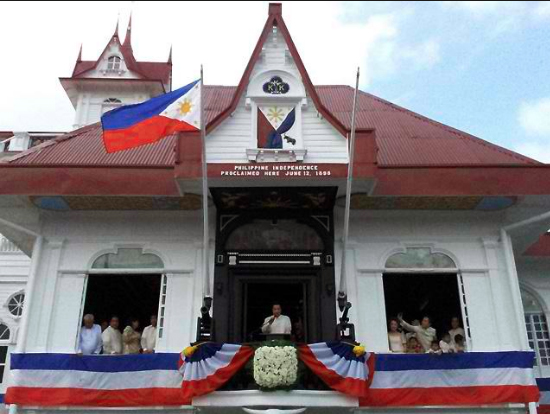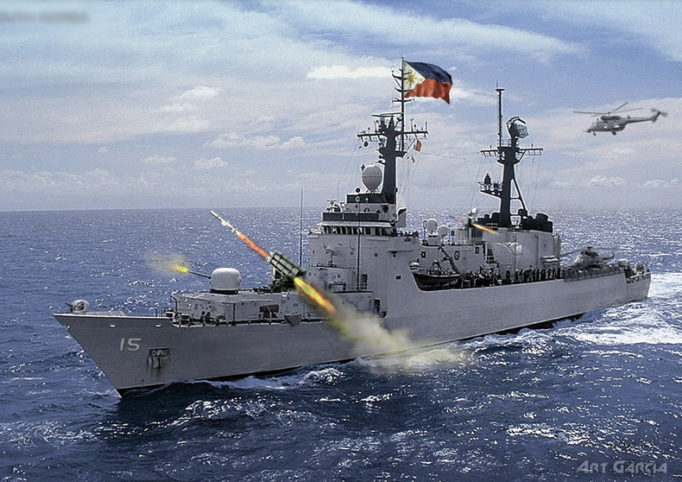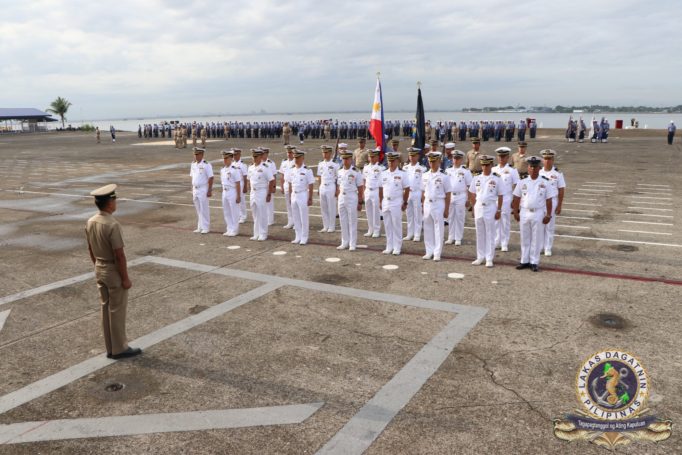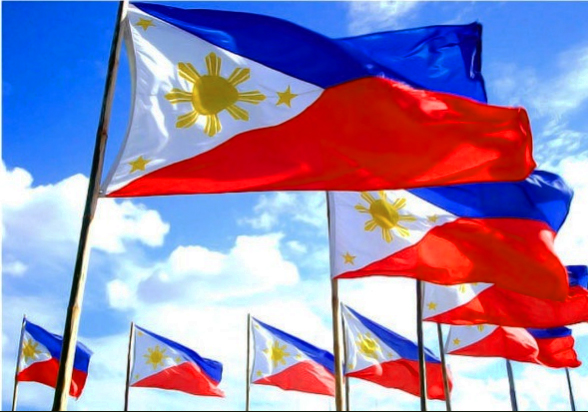“Let us respect, honor and revere our Philippine Flag!” was President Fidel V Ramos’ concluding line in his Maritime Review article three years ago after he graced a few weeks earlier the 118th Anniversary of the Battle of Alapan that took place on 28-May-1898 in Imus, Cavite. After this victorious battle of Filipino revolutionary forces against Spanish troops, General Emilio Aguinaldo unveiled the Philippine Flag that he himself designed. A hundred years later, centennial President Ramos signed the “Flag and Heraldic Code of the Philippines” to give the flag more meaning and significance, as the national symbol of sovereignty.
The flag General Aguinaldo displayed in the Battle of Alapan was the same flag that he unfurled when he declared Philippine Independence Day on 12-June-1898 in Kawit, Cavite. Inspired by the flags of Cuba and Puerto Rico and while on exile in Hongkong, the General asked Marcela Mariño de Agoncillo, her daughter, Lorenza, and Delfina Natividad to sew the Philippine Flag. He brought it home a few weeks before the battle.

Aguinaldo’s flag design encapsulates the cultural and social inclinations of the nation. The white equilateral triangle at the hoist part represents liberty, equality and fraternity as well as the figure symbol of the Katipunan, or Kataas-taasan, Kagalang-galangang, Katipunan ng mga Anak ng Bayan (Supreme and Venerable Association of the Children of the Nation). The three yellow stars within the triangle stand for the three major island groupings of the country –Luzon, Visayas and Mindanao. The sun portrays unity, freedom, democracy and sovereignty while its 8 rays depict the 8 provinces that originally rebelled, under a central leadership, against Spain –Manila, Cavite, Bulacan, Laguna, Batangas, Pampanga, Tarlac and Nueva Ecija. The blue horizontal stripe at the top signifies peace, truth and justice while the red stripe at the bottom means patriotism and valor.
Unlike many countries that use another flag for wartime, the Philippine flag signals open hostilities against a foreign aggressor by displaying the red stripe at the top of the flag. This happened during the Filipino-American War in 1899-1902, the Japanese invasion in 1941-1942, and the Philippine Liberation in 1944-45.
The current Flag Law lists down the circumstances on the proper placement, handling, use and disposal of the Philippine Flag. It also enumerates sanctions for dishonoring and disrespecting the flag. However there is one aspect that the law probably missed: displaying the flag beneath the surface of the sea as what was done on 12-June-2017 at the shallowest portion of the Philippine Rise off Quezon province. Two legislators joined defense and military officials witnessing the planting of a standard-sized laminated fiberglass Philippine Flag 72 meters below sea level. With no other claimants, this move appears more for publicity than for a substantive maneuver.
This action may have been inspired by two similar but separate events. In 2007, a Russian submarine with a Parliamentarian onboard, placed a titanium-made Russian flag in Lomonosov Ridge in 2007 in the Arctic Ocean floor 4,261 meters from the surface, to strengthen its claim against Denmark and Canada. Three years later, China did something in an undisclosed location in South China Sea 3,760 meters below, using 2 submersibles with a top marine scientist aboard for the same reason: to claim ownership or rights. A Canadian political professor referring to the Russian initiative revealed that putting a submerged marker, such as a flag, in the Arctic Ocean has no international legal effect, and termed it “legally insignificant.”
Another important aspect in the Flag Law is the use of flag collar pins. Popularized by former US President Richard Nixon in late 60s, senior government officials attending international events wear flag collar pin to identify the country they represent. In the Philippines, the Flag law authorized the wearing collar pins not only by government officials by other Filipino citizens. Indeed the proper use of collar flag pins indicates respect to the country and its people. It is sad to note, however, that at one time in the recent past, many high government officials wore yellow ribbon pins instead of the flag pin. Some viewed this as unpatriotic, disrespectful to the flag, and politically divisive.
Given the country’s archipelagic configuration and vast maritime domain the Philippine Navy and the Philippine Coast Guard often “show the flag” seaward of the territorial waters and the contiguous zone, and up to the fringes of the Exclusive Economic Zone (EEZ) –not to exercise sovereignty but to assert the sovereign rights vested by the UN Convention on the Law of the Sea and Philippine laws. In the past, these two maritime forces termed their watch-keeping missions in those areas as “sovereignty patrols.”
Those sea patrols deter poaching and illegal, unregulated and unreported fishing, prevent unauthorized exploitation of seabed minerals and energy sources, and dissuade transnational crimes and other illegal activities like marine pollution and environmental degradation. Apart from maritime law enforcement, they could render assistance to distressed vessels and conduct search and rescue operations. The constant presence of seagoing forces in the EEZ contributes to the safety and security of the merchant ships and fishing vessels, thus assuring the freedom of navigation. This freedom enhances trade and commerce that in turn bring about progress and prosperity to the peoples of this planet.

Relatedly, the country’s UN Peacekeeping Contingents in some parts of the world proudly display the Philippine flag that they pledge allegiance to. These peacekeepers live by the core values of honor, loyalty, valor, duty and solidarity. They took their oath, and affixed their signature, to uphold and defend the Constitution, abide by the laws of the land, and follow the orders of the duly constituted authorities.

The men in uniform respect and honor the national flag as the rest of the Filipino and their civilian leaders do. To revere the Flag requires a little more sacrifice: to be united in thought and action, to be just and fair in dealing with fellowmen, to be truthful in relationships with all sectors of the society and international community, and to be valorous in defending the country’s sovereignty.
